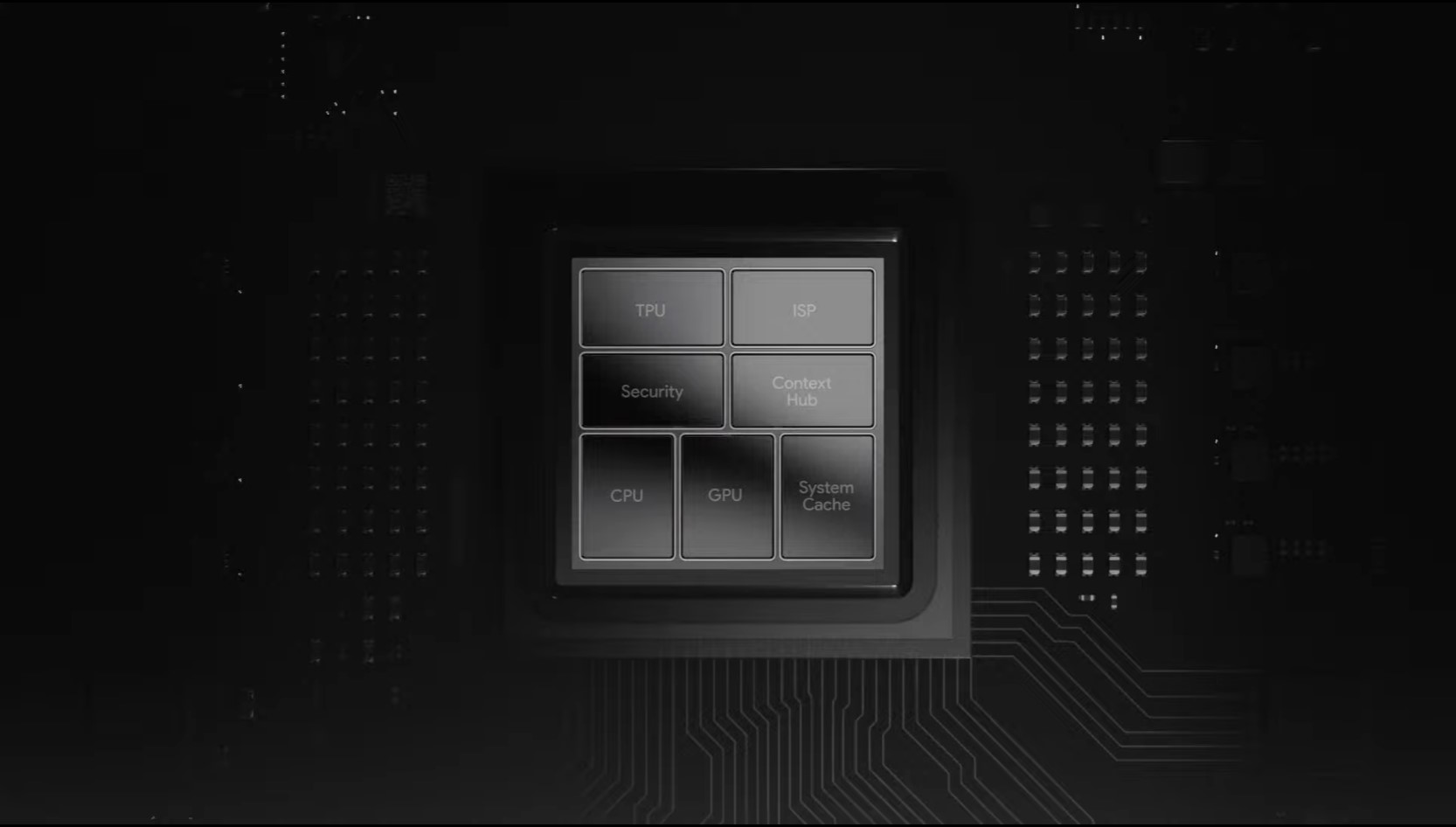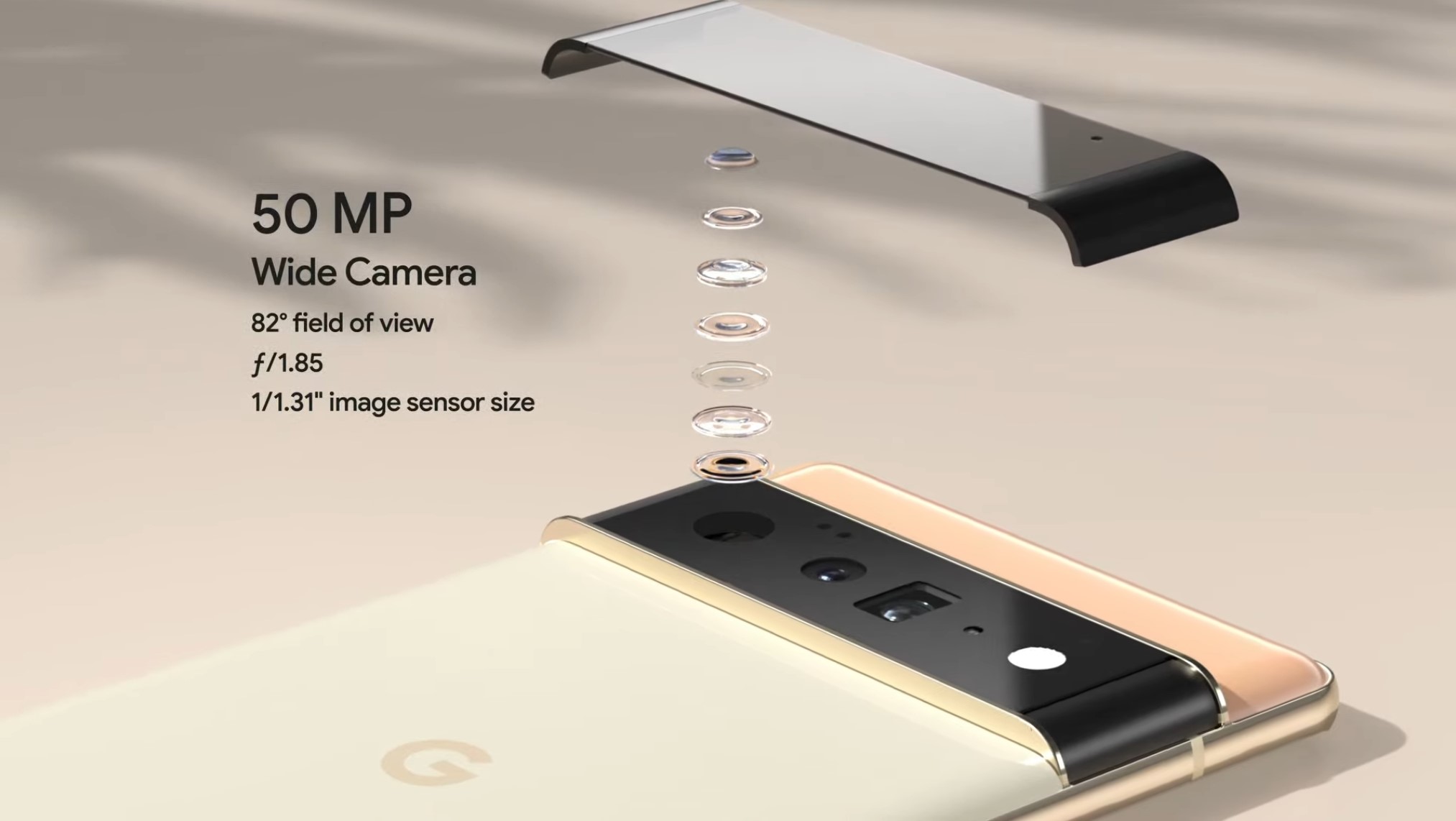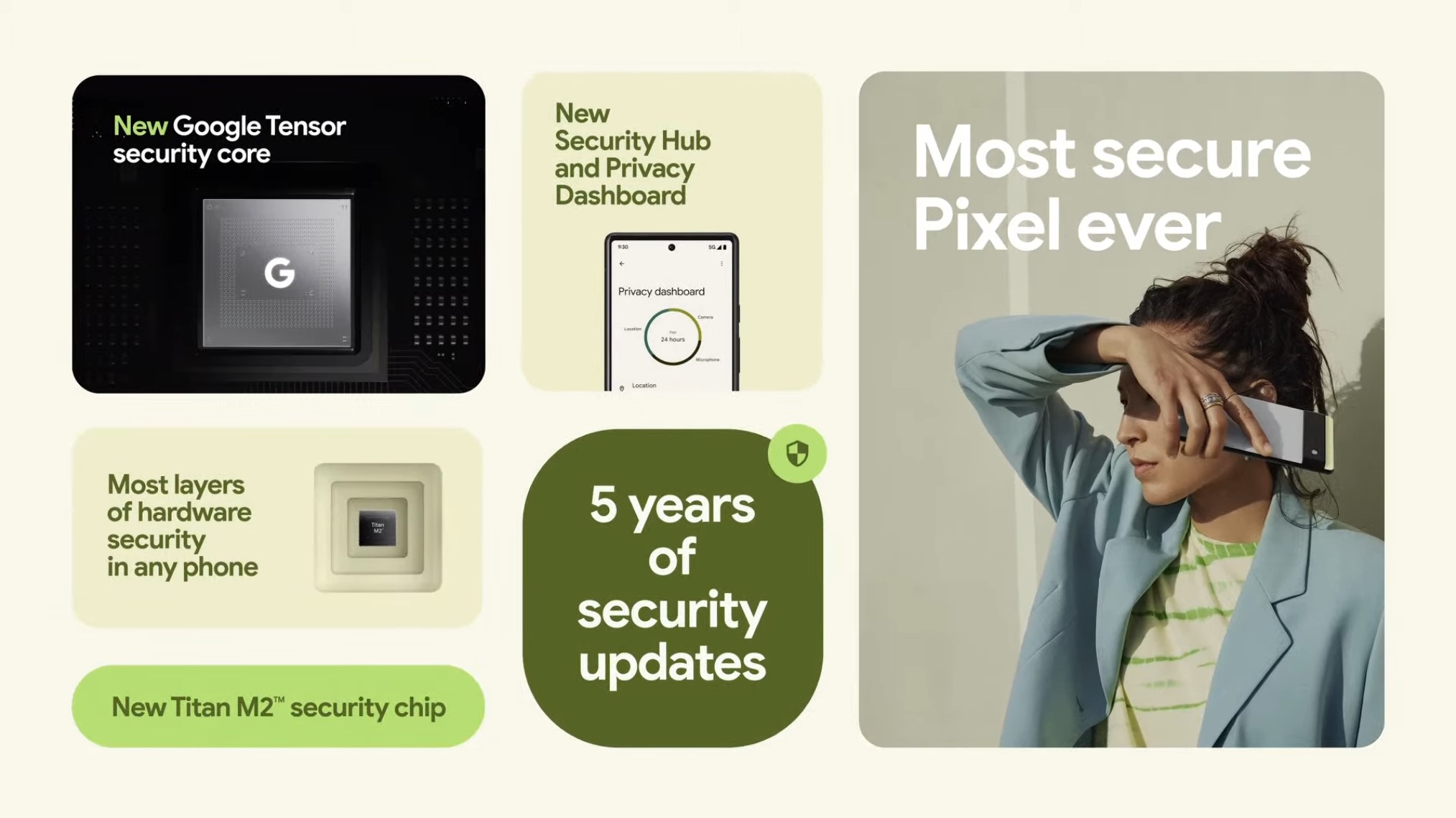
During a Pixel 6 event livestream earlier today (Oct. 19), Google pulled the lid off the upcoming Pixel 6 and and Pixel 6 Pro. Both will rock the company's bespoke Tensor chip, which forgoes Qualcomm processors of years past.
Tensor is all about being smarter computationally. Google is aiming not to solve the difficult problems of computational photography and live translation by simply adding more horsepower, but instead is using specifically designed cores on the Tensor chip to more cleanly and efficiently compute intensive AI tasks.
Below is everything you need to know about Tensor in the Pixel 6 and Pixel 6 Pro.
- Google Pixel 6 review: current impressions so far
- Google Pixel 6 Pro review: early evaluation of new hardware
- Plus: How to pre-order Google Pixel 6 — best early deals
Pixel 6 Tensor: what is it?

Google Tensor is a System on Chip (SoC) designed to run Google's Machine Learning (ML) models. Google claims it has designed Tensor for where ML is heading, not where it is today.
Google's Machine Learning Engine takes place on the Tensor Processing Unit (TPU). The Pixel line has defined itself for years with its advanced computational photography. That's why the affordable Pixel 5a can compete with flagships like the iPhone 13 Pro in photography. It's not just the megapixels that matter; the software that renders the images is also important.
Image processing takes place on the advanced image signal processor (ISP). Google brought its key photography algorithms into the chip itself for better efficiency.
The 8-core CPU on the Tensor chip has two ARM-based high-performance cores, 2 mid cores and 4 high-efficiency cores. The GPU has 20 cores.
Sign up to get the BEST of Tom's Guide direct to your inbox.
Get instant access to breaking news, the hottest reviews, great deals and helpful tips.
The Context Hub is an ultra low power engine that brings machine learning for low-power tasks, like always-on display or "now playing" to run while not draining battery.
Google claims that with Tensor, it's trying to solve for heterogenous computing. Essentially, complex apps will use multiple parts of the chip at once, and Google wants to ensure that different subsystems inside the chip work well together.
Google also went out of its way to fight back against benchmarks that only measure peak speeds. It claims that speed alone isn't a good indicator of real-world performance. It seems that Google knows that benchmarks for Tensor on Pixel 6 will not keep pace with the competition, especially with the A15 Bionic inside the iPhone 13, but that Tensor will bring new real-world experiences that weren't before possible.
Pixel 6 Tensor: better photography

The Pixel 6 has new cameras with bigger pixels that let in more light. This is all good news, but Google wants to stress that its Tensor that brings images to life.
In the past, Google was able to leverage having just one camera on Pixel devices as its algorithms were able to analyze the elements of a photo and calibrate them to really make images pop. Doing that same type of computational analysis is far more difficult on video.
Video is essentially a series of photos taken in succession at very fast speeds. So a 60 frame-per-second video is actually more like 60 individual photos taken within the span of a second. Having a chip analyze each one of those photos would be a difficult task for any CPU, especially for one as tiny as on a phone.
Google has worked on new tone mapping methods for video that can cross apply those on video frames instantly. A new algorithm called HDRnet has been created to give video that Pixel look more efficiently. Using Tensor, Google can enable parts of HDRnet into the ISP directly. This makes image processing faster and more efficient.
Google claims that HDRnet on Tensor can be enabled on 4K 60fps video.
Other cool camera features thanks to Tensor include Magic Eraser, a feature that erases unwanted objects or people from photos. This feature uses Google's ML to do the task of what somebody would need to do on Photoshop, but in an instant. Face Unblur is another feature that removes the blur on a moving person's face. The example Google used was of a little girl jumping. Google uses face tracking to find a face in a shot. It then uses both the main and ultrawide cameras to track the subject. Google's ML uses the sharper image to superimpose it on the clearer picture, combining the blur of body movement with a clear shot of the subject's face.

On the opposite end, users can add blur with Motion Mode. This can add background blur to fast-moving objects by taking multiple photos and using ML. It also works when the background is stationary, but the subject is moving fast.
Pixel 6 Tensor: equitable photography with Real Tone
During the Pixel 6 presentation, Google made a big deal of its new Real Tone feature, and rightfully so.
In the early days of photography, when photos were being developed in dark rooms, photographers would reference Shirley cards, or cards of a white female model with brown hair, as the ideal way to calibrate skin tones, colors and lights. Shirley cards had been made in the 1950s, and various Shirleys have extended throughout photographic history. In the early days, these women were considered "normal" or the base standard.
This bias towards white skin has extended past analogue photography and into modern digital photo processing as well. The problem is that photographing darker skin has then become a greater challenge as sensors have been calibrated to an older default.
Often systems or sensors would demand more light for those with darker skin to appear more clearly. But this is not necessarily an accurate representation of a person's skin tone. The auto white balance tuning and improve auto exposure help a person's skin tone look more natural, as opposed to washed out.
Pixel 6 Tensor: added security core
Google claimed in its presentation that Pixel 6 is its most secure Pixel to date. It didn't go so far as to say it was the most secure smartphone to date, as that might prompt Apple and its legion of fans to counter with the increased security measures on iPhone 13. In trying to match Apple's standard, Google is promising Pixel 6 owners five years of security updates.
The Tensor Security Core is a CPU subsystem that's separate from the application processor. This is so that sensitive information runs through an isolated environment.
Titan M2 will be the dedicated security chip on the Pixel 6. It'll work with the Tensor Security Core to protect sensitive user data. It's also better prepared against advanced attacks, such as those that come from electromagnetic analysis, voltage glitching and laser-fault injection.
Either way, Pixel 6 earned a perfect score on a recent analyst evaluation. Although Google didn't specify which organization made this evaluation.
Titan M2, Tensor Security Core and Google's new opensource trusted execution environment gives Pixel 6 the most layers of hardware security out of any smartphone, the company claims.

Google wants to help make security easier to understand and manage, and it's doing that with the Security Hub. Here, users can see if their apps and passwords are good.
Google will also notify users via a prompt on the top-right corner that lets them know if an app is turning on the camera. Cameras can be quickly turned off via a new toggle.

Google is keeping users up-to-date on app permissions via the Privacy Dashboard.
Like Apple, Google is doubling down against apps that track users. This might be a bane on services like Facebook, which profit off of app tracking, but will be welcome to users.
Unfortunately, it doesn't seem as if Google is being as explicit with tracking permissions as Apple. Google is, after all, an ad company. So it might not be great if a mass number of Android users suddenly opted to turn off cross-app tracking. Early analytics claimed that 96% of Apple users opted out of tracking.
But it is still possible. By going into Google Account settings, users can reset Ad ID on Android. Users have to go to Settings > Privacy > Advanced > Ads > Reset advertising ID.
A user's sensitive information runs through the private compute core. Google claims that sensitive information never leaves a user's Pixel 6 device without explicit permission.

Spam calls and spam texts have been an absolute pain for billions of smartphone users around the world. Google's security core can now identify phishing schemes, whether it be via text, email or some other link. It will inform users if something looks suspicious.

Pixel 6 Tensor: typing and translation

Speech-to-text has been both a benefit and a bane. When it works, it can make sending out a long text that much easier. But when it doesn't work, it requires the user to go back in and edit, sometimes taking longer than typing the text out by hand.
With Tensor, Google is touting natural language processing, one that can transcribe a person's voice more smartly, even those with different accents or with food in their mouth. Not only can speech-to-text add in punctuation marks, it knows that when a user mentions a specific name, it'll cross-reference it with those in a user's contact list. Tensor is also smart enough to send a message when a user says "send" rather than typing out the word "send."
Users can also say "pizza emoji" and it'll add that emoji into the text.
Tensor can screen calls from unknown sources or robocalls. Pixel will ask potential spam callers why they're calling before a user decides to pick up.
Pixel 6 also aims to make calling customer service a much easier experience. Google Assistant will aim to help users move through automated customer service systems and will even wait in line, listening to that annoying Muzak in place of the user. It will then notify the user when a person has come to the line.
Google easily has the best language translation software on the internet. Not only has its accuracy improved dramatically, the languages available are wide. Google claims that Tensor improves translation quality by 18% while using less than half as much power as before. A user can reply to a text in one language, and it will translate it within the phone and send it off in another. Translation is even available for the camera to help translate signs in other languages.
Live translation is also possible, meaning that with a Pixel 6, users can converse with another person in their own native language with the phone acting as an interpreter.
Pixel 6 Tensor: why it's a big deal
With Apple's M1 and A15 Bionic, it's shown the industry that there's power in bespoke silicon. Instead of working with a base processor design that requires software to be designed around it, designing both the software and processor together can lead to huge gains in efficiency.
Google, with its advanced machine learning and computational photography, has come to the same conclusion. While Qualcomm still makes powerful mobile chips, sometimes it's better not to chase horsepower alone and instead look at ways to make a phone's engine lighter, more balanced. In Tensor's case, it was about getting as much efficient computation from the SoC as possible.
Already we're seeing Samsung doing the same thing with its Exynos chips as well, as rumors are pointing to greater advancements with next year's Galaxy S22.
If phone and computer manufactures shift towards custom silicon, that could mean major trouble for chip makers like Intel and AMD. Already, Intel has seen a major market decline, coupled with a failure to output denser nanometer manufacturing processes and burdens caused by the Covid-19 pandemic. Losing Apple as a major chip buyer didn't help either.
Still, this could all be good for the consumer. Apple's new chips are running circles around the competition, and that's because it was able to vertically integrate chip and software development. Google took notice, and likely Microsoft has as well. Tensor's major impact may not be in ML translation and photography, but rather a shift in the larger CPU market as a whole. One that will prioritize conjunctional hardware-software development above all else. Because if there's one thing that holds true for Silicon Valley, no one company stays top-dog for long.
Imad is currently Senior Google and Internet Culture reporter for CNET, but until recently was News Editor at Tom's Guide. Hailing from Texas, Imad started his journalism career in 2013 and has amassed bylines with the New York Times, the Washington Post, ESPN, Wired and Men's Health Magazine, among others. Outside of work, you can find him sitting blankly in front of a Word document trying desperately to write the first pages of a new book.

